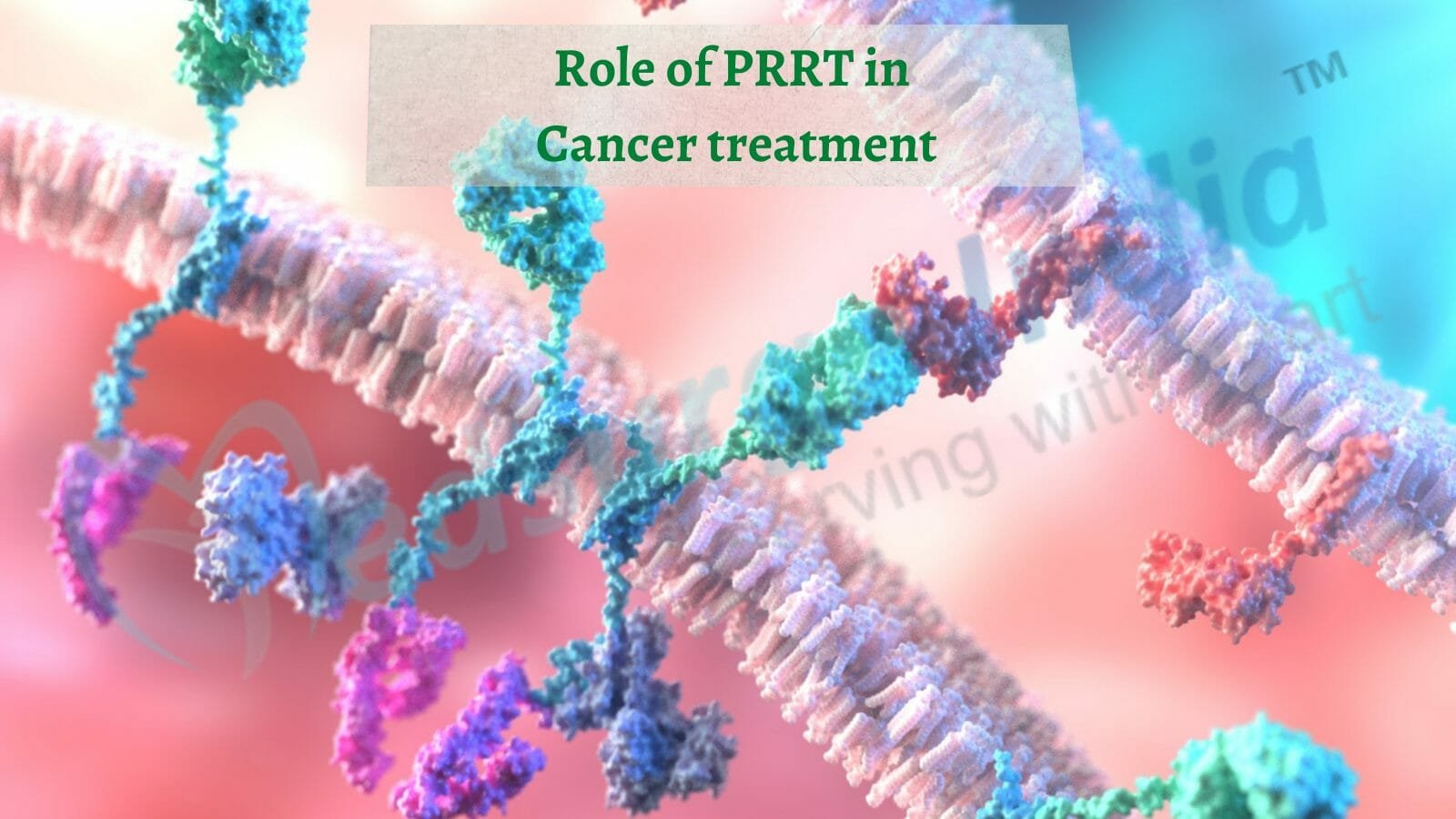
Role of PRRT Therapy in Cancer Treatment
For years, nuclear medicine has been utilized to treat neuroendocrine tumors and Prostate cancer in India, Europe, Australia, and other countries. After a multicenter clinical trial and expanded access procedure, the FDA and other government authorities have approved it in 2018. To eliminate cancer cells, this treatment sends radiation directly to the tumor.
PRRT is a targeted molecular therapy for neuroendocrine tumors (NET). Drugs or other substances are used in molecular targeted therapies to detect and kill cancer cells while minimizing injury to healthy tissue. PRRT therapy is a treatment that uses high doses of radiation to eliminate or inhibit the growth of tumors in the body while also reducing disease adverse effects.
What are Neuroendocrine Cells?
Nerve cells that can also generate and release hormones are known as neuroendocrine cells. Their job is to ensure that the body functions properly. On the surface of most of these cells are special switches (called receptors) that turn cells on and off.
They accomplish this by:
- Receiving (sensing) messages from their surroundings.
- Controlling various biological functions like digestion, body heat, and metabolism by releasing hormones and other substances.
What are NETs?
Neuroendocrine tumors (NETs) form when neuroendocrine cells undergo alterations and divide uncontrollably, resulting in a tumor. These cells have the capacity to spread throughout the body via the bloodstream. Some of these tumors can also create too many hormones and other substances, resulting in a variety of symptoms such as flushing and diarrhea.
Somatostatin receptors, or SSTRs, are a type of unique receptor found on many NETs.
What is PRRT Therapy?
A type of radiation treatment is PRRT therapy for neuroendocrine. To make ‘Lutetium-Octreotate,’ a radioactive medication (usually Lutetium) is bonded to a specific protein called ‘Octreotate’ (also known as LuTate).
LuTate is injected into the circulation and binds to the somatostatin receptors on NET cells, causing a high dosage of radiation to be delivered to the cancer cells, inflicting direct destruction.
The major goal of PRRT therapy is to cease or control tumor growth while also improving symptoms and quality of life; nonetheless, it seldom entirely kills tumors. Patient outcomes differ, and this is best discussed with your specific clinician.
Peptide receptor radionuclide therapy (PRRT) targets specific peptide receptors on tumor cells to give highly localized radiation. This therapy was developed primarily for the treatment of unresectable/metastatic well-differentiated neuroendocrine tumors (NETs), which exhibit a high uptake on somatostatin receptor imaging (SRI) and hence can be targeted with PRRT.
PRRT consists of three basic components: a high activity radionuclide (177Lutetium or 90Yttrium), which is connected to a somatostatin receptor (SSR)-binding ligand (usually a somatostatin analogue) via a chelator (DTPA or DOTA) (octreotide or octreotate).
Due to its reduced toxicity than 90Y-labeled PRRT, 177Lu-labeled PRRT is now the radionuclide of choice for clinical application in most facilities. PRRT therapy is given intravenously, allowing large doses of radiation to be delivered specifically to locations where SSR-expressing cancers have disseminated throughout the body.
Who may benefit from PRRT?
- Patients with somatostatin receptor-positive gastroenteropancreatic NETs, as well as common neuroendocrine tumors of the stomach, rectum, pancreas, small and large intestine, and for prostate cancer PRRT therapy should be considered. Because NETs are not usually discovered until they have progressed, surgery may not be indicated because it might not remove all of the tumors.
- Hormone therapy is used to decrease symptoms and tumour growth in gastroenteropancreatic NETs that cannot be removed surgically. However, if tumors persist after treatment, the PRRT medicine 177-Lu-Dotatate, which mixes the produced form of somatostatin with radioactive material, may be used as a second-line treatment.
- In clinical trials, patients who were administered 177-Lu-Dotatate for cancers that were progressing despite first-line treatments lived nearly three years longer without cancer progression than those who were given hormone therapy.
How PRRT Therapy is performed?
- A set of four PRRT therapy in India, treatments with 177Lu-DOTATATE spaced roughly 8 weeks apart is the most common procedure. It is possible that local protocols will differ.
- This therapy may be performed as an outpatient operation or may necessitate a few days in the hospital.
- This treatment is usually done as a half-or full-day outpatient procedure, with only a few exceptions when a patient may need to stay in the hospital overnight.
- Anti-nausea pre-medications are given before each PRRT session, followed by an amino acid solution. The amino acid solution is given intravenously to protect the kidneys of the patient from the treatment’s side effects.
- After that, the radioactive substance is delivered to the patient, which takes around 30 minutes, and an additional amino acid solution is given to the patient. The treatment session lasts about four to five hours in total.
- Post-treatment 177Lu scans may be used before and after therapy to determine where the injected radioactive medication has traveled in the body, although they are not required by the FDA.
What are the advantages of PRRT?
More targeted cancer treatment is possible with this therapy and other molecular medicines. The role of PRRT in cancer treatment is complex because these radioactive medications are very selective in their capacity to directly reach and kill neuroendocrine tumor cells while reducing radiation exposure to healthy tissue, PRRT is referred to as targeted therapy. As a result, PRRT is well tolerated in the majority of cases.
PRRT is a highly effective therapy option for advanced, metastatic, or incurable progressive neuroendocrine tumors. PRRT is rarely curative, however, it has been demonstrated to help with symptom relief, tumor shrinkage, and disease progression.
What are the risk factors with PRRT?
All medicines, including PRRT therapy in India, have risks and adverse effects. This is something you should talk to your doctor about. Given your medical history, your medical practitioner will assist you in determining whether PRRT is good for you. Please tell your clinician about any previous therapies you’ve had, since this can help determine the best course of treatment and dose.
What are the side effects of PRRT?
The PRRT itself is well-tolerated, but the amino acid solution administered for kidney protection might cause nausea and vomiting in certain patients, especially with certain types of amino acid solutions. Anti-nausea medicine or slowing down the amino acid infusion can help with this. A lowering of blood cell counts, which is mild to moderate in the majority of instances, is one of the long-term side effects. Long-term side effects, such as persistent kidney damage or the emergence of secondary blood problems (referred to as myelodysplastic syndrome), are uncommon. The majority of patients tolerate the treatment well.











